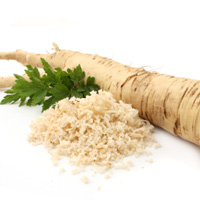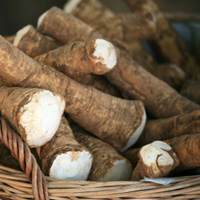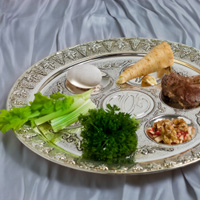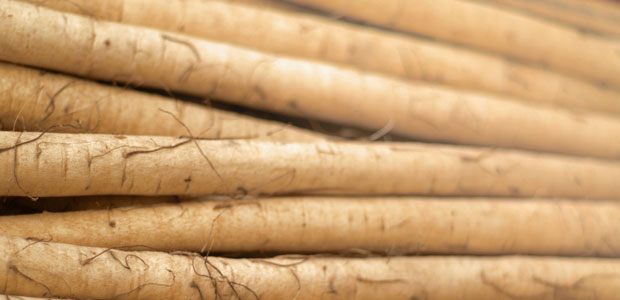Sun Belle Horseradish
Sun Belle horseradish is grown in Mississippi river bottom in southern Illinois just east of St. Louis. This pungent member of the mustard family is a hardy root six to twelve inches long. Use of fresh horseradish in the home is a revelation in sauces or as a flavoring grated onto a host of foods.
-
 The sharp and piquant flavor and nose clearing qualities of horseradish are only released when the
root is grated or crushed, causing volatile oils to be released. For a fresh burst of flavor, grate
horseradish on meats, particularly roast beef, mashed potatoes, purees, sandwiches or stews. Fresh
grated horseradish adds zip to sauces including cocktail sauce, mayonnaise, cranberry sauce and sour
cream based dips.
The sharp and piquant flavor and nose clearing qualities of horseradish are only released when the
root is grated or crushed, causing volatile oils to be released. For a fresh burst of flavor, grate
horseradish on meats, particularly roast beef, mashed potatoes, purees, sandwiches or stews. Fresh
grated horseradish adds zip to sauces including cocktail sauce, mayonnaise, cranberry sauce and sour
cream based dips.
-
 Human use of horseradish dates back 3,000 years. It has been known as an aphrodisiac, a treatment
for tuberculosis, a rub for lower back pain. More recently, this known diuretic has been used to
treat minor ailments such as urinary tract infections, bronchitis, sinus congestion and coughs.
Human use of horseradish dates back 3,000 years. It has been known as an aphrodisiac, a treatment
for tuberculosis, a rub for lower back pain. More recently, this known diuretic has been used to
treat minor ailments such as urinary tract infections, bronchitis, sinus congestion and coughs.
-
 Horseradish is a component of the Passover Seder (meal) table. The root symbolizes "maror" or bitter
herbs on the Seder plate. Horseradish, usually flavored with beet juice, is served during the meal
as a condiment to gefilte fish and is spread on matzah, unleavened flat bread, to literally bring
forth tears evocative of the bondage of the Israelites.
Horseradish is a component of the Passover Seder (meal) table. The root symbolizes "maror" or bitter
herbs on the Seder plate. Horseradish, usually flavored with beet juice, is served during the meal
as a condiment to gefilte fish and is spread on matzah, unleavened flat bread, to literally bring
forth tears evocative of the bondage of the Israelites.
-
Nutrition Facts Serving Size: Prepared Horseradish (15g) Calories: 7 Sodium: 47 mg Total Carbohydrates: 2 g Dietary Fiber: 0 g Sugars: 1 g Protein: 0 g % Daily Value Vitamin A: 0% Vitamin C: 6% Calcium: 1% Iron: 0%






 Only when grated…
Only when grated…
